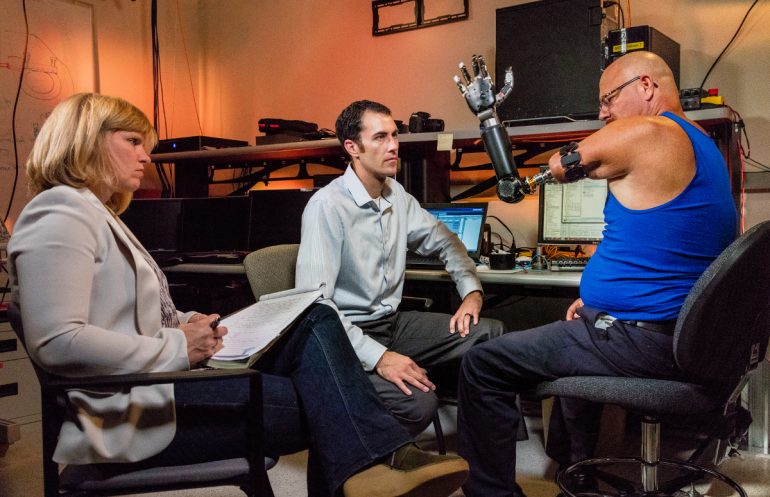When the Myo market came out of beta a few months ago, it had just surpassed 100 apps, spanning verticals like productivity, fitness, and games. As a device that allows the user to engage tech with gesture-based controls — Armin Van Buuren even uses it in concerts — it was yet to be seen what boundaries developers would push with the Myo.
At the Johns Hopkins Applied Physics Laboratory, researchers have developed a gesture-controlled prosthetic arm for Johnny Matheny, called The Modular Prosthetic Limb. The prosthetic limb is attached directly to Matheny’s skeleton, and Myo’s EMG sensors measure the electrical pulses in the muscles in his upper arm to be sent to a computer via Bluetooth, which analyzes the signals and determines the movements that the patient is trying to make. The results are then sent back to the modular prosthetic limb. Matheny is the first person to attach a gesture-controlled prosthetic limb directly to his skeleton.
“There have been other interesting developer projects with other partners integrated with Myo doing really cool things, but this project at Johns Hopkins is one of the more interesting 3rd party developer projects to be done with Myo,” said Stephen Lake, founder and CEO of Thalmic Labs.
Lake said that he didn’t even realize that the Applied Physics Laboratory team was working on the device until they reached out to Thalmic Labs about its completion. Lake also said that the project speaks to the versatility of the Myo, which allows it to be useful in a variety of verticals, rather than just focusing on one.
“We try to focus on the core product, which is the algorithm and key innovations.Aand that’s what really gets people like Johns Hopkins to build these products,” Lake said. “We support them by doing this, and then they just agree to personalize it with their product and share their research with other teams. We don’t place limitations on what they can do with the technology.”
Watch it in action:


